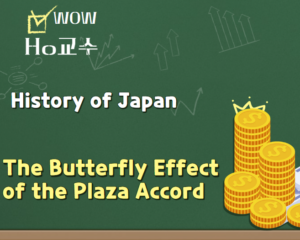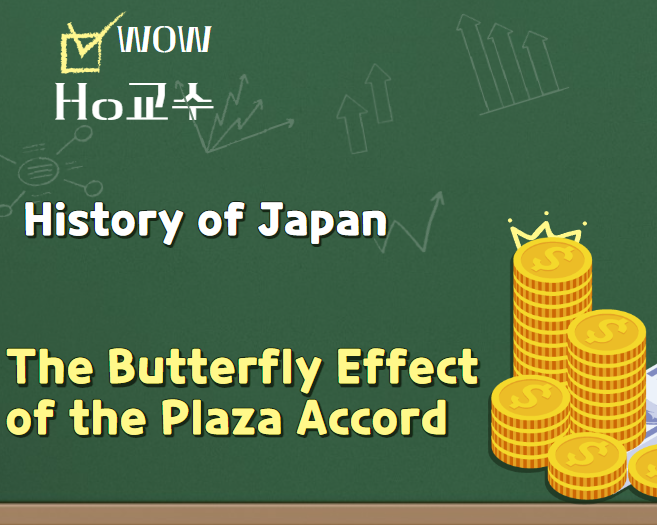The Japan Economy 30 Year. From the Japanese perspective, it’s important to delve into the history of Japan’s economic resurgence and the cycles of economic bubbles. By summarizing this history, we can gain a better understanding of what kind of country Japan is. In recent times, due to the weakening of the Japanese yen, there has been a significant focus on “Abenomics” and technological advancements (“EnTech”). Given the unpredictable nature of exchange rates, it’s indeed wise to study the historical patterns that have shaped Japan’s economy. This can provide valuable insights for contemplating the future

The Japan Economy 30 Year History
The Resurgence of Japan
Due to collusion among oil-producing nations, oil prices skyrocketed, causing a fourfold increase in oil prices in the United States. Additionally, grain and food prices rose, triggering a significant inflationary period. While the causes may differ, this situation bears resemblance to the recent inflation observed from 2022 to 2023
To curb inflation, a figure named Paul Volker assumed the position of Chairman of the Federal Reserve. He pursued policies solely focused on reining in inflation, without concern for economic growth. This is reminiscent of the current Federal Reserve Chairman who, as of 2023, is aggressively raising interest rates in a bid to control inflation
Raising the benchmark interest rates all the way up to 21.5% seemed incredibly drastic; as a result, there was no economic growth, and the overall business climate deteriorated. However, this measure managed to rein in inflation effectively
Due to the extremely high interest rates, investments were deterred, leading to an increase in unemployment and the collapse of the manufacturing sector in the United States
While factories declined, the high interest rates caused money to flow into the United States, resulting in the appreciation of the dollar and an increase in the exchange rate
As the exchange rate of the United States rose, Japan was able to export high-quality products at competitive prices, leading to enhanced price competitiveness. This resulted in a significant export boom and tremendous economic growth for Japan
Plaza Accord
In the trade between the United States and Japan, a deficit of -40% was recorded for the United States. This prompted the United States to take action
On September 22, 1985, the famous Plaza Accord was reached. This was a meeting that specifically targeted Japan
Due to Japan’s low yen value, which resulted in a booming export market, the United States pressured Japan to increase the value of the yen
Given that a significant portion of exports was directed towards the United States, Japan found it difficult to refuse. At that time, the perception might have been a simple reduction in profits. However, in hindsight, the Plaza Accord triggered a tremendous butterfly effect, leading to far-reaching consequences
The exchange rate of 250 yen per 1 dollar swiftly rose to 120 yen per 1 dollar, causing a rapid appreciation of the yen. As a result, the prices of Japanese export goods doubled
In 1986, Japan experienced negative growth within a year, and realizing the limitations of exports, Japan shifted its focus towards the domestic market
To revitalize the domestic market, Japan began lowering benchmark interest rates and loosened regulations on real estate. This is analogous to cases such as South Korea’s real estate surge triggered by increased borrowing for home purchases in 2015, or the rapid increase in spending due to stimulus during the COVID-19 pandemic
As a result of the low interest rates and regulatory easing, the general population’s attention and funds shifted towards investing in real estate and stocks. This pattern was similar to what occurred in South Korea during the COVID-19 pandemic season
With low interest rates, many took advantage of loans to purchase real estate, and as demand surged, real estate prices skyrocketed in an unprecedented bubble, reminiscent of a frenzy
As the bubble intensified, loan limits were imposed, but people continued acquiring real estate using property as collateral for additional loans. This chain reaction further exacerbated the property frenzy, causing property prices in Tokyo to triple between 1987 and 1988
While the average figures reflect this trend, specific regions saw even more dramatic increases, with certain areas experiencing a 15-fold rise in property prices within just a year. This led to the emergence of a significant number of wealthy individuals.
Following the real estate frenzy, money flowed into the stock market, causing a surge in Japanese stock prices
During that time, the majority of the top 20 companies in the world by market capitalization were Japanese, with only IBM and GE representing American companies
With a substantial influx of money in Japan, the era of economic bubbles began. During this time, Japanese automakers developed and released supercar models like the NSX, RX7, and Skyline, even if the sales volume might not have been high. These vehicles could be compared to the ones featured in the Initial D series
The Burst Bubble and Japan’s Lost Decade
Due to the severity of the bubble, measures were taken to address the situation, including raising interest rates and implementing stricter regulations. The benchmark interest rate was increased from 2.5% to 6%, and a loan-to-value (LTV) ratio limit of 70% was introduced. However, as the real estate bubble burst, Japan entered a prolonged period of economic stagnation known as the ‘Lost Decade,’ which lasted for about 30 years.
Many discussions draw parallels between the current period and the situation at that time, similar to the circumstances in South Korea as of 2023
An attempt was made to lower the value of the yen again to boost exports, but a devastating earthquake, known as the Great Hanshin Earthquake, occurred
Furthermore, in 2011, the Great East Japan Earthquake occurred, and the issue of nuclear power plants arose due to concerns over radioactive contamination. Even now, the discharge of contaminated water from these plants remains a topic of international concern.
Due to the immense natural disasters, Japanese insurance companies had to allocate funds for insurance payouts. Their primary assets were largely invested overseas
Efforts were made to repatriate the money invested abroad back to Japan, resulting in an influx of dollars, which became so abundant that it led to excess. As a consequence, the efforts to lower the value of the yen turned out to be futile, leading to a resurgence in the strength of the yen
Not only in real estate but also in the stock market, there was a sharp decline, with the market indices plummeting to just one-fifth of their peak levels
Abenomics, Yield Curve Control, and Depreciating Yen Value
Due to the Democratic Party’s tax reforms, a change in power occurred, leading to the Abe administration. Abe introduced the ‘Abenomics’ strategy, aiming to devalue the yen through economic measures to boost exports and foster growth in key industries for the future
Resulting from this was the Yield Curve Control (YCC) policy
I understand that sometimes concepts can seem clearer when explained in a simpler manner. The Yield Curve Control (YCC) policy is a strategy employed by central banks to manage interest rates and stabilize the economy. In this policy, the central bank targets specific yields (interest rates) on government bonds across various maturities. This helps control borrowing costs, influence spending and investment, and maintain economic stability. It’s like adjusting the thermostat to keep a room’s temperature comfortable – in this case, adjusting interest rates to keep the economy stable.
Please refer to the YCC policy explanation document
Conclusion
Many people are fearful because Japan’s past and South Korea’s present are so similar in this way.
There have been speculations that South Korea might face a prolonged period of economic challenges similar to the “Lost Decade” experienced by Japan. However, economic outcomes are influenced by various factors, including policy decisions, global trends, technological advancements, and more. While historical comparisons can offer insights, they don’t necessarily predict the future with certainty. Policymakers and stakeholders often work to avoid repeating past mistakes and create a path toward sustainable economic growth.
While it’s impossible to predict the future with certainty, looking at Japan’s history provides numerous similarities
One notable difference is that while Japan could sustain a significant domestic economy, South Korea’s relatively small territory and population of around 50 million mean that its domestic market is limited in scale. This awareness of relying heavily on exports due to the constraints of a small domestic market might be a key distinction between the two countries.
Indeed, being well-prepared leads to successful outcomes. Just as the Plaza Accord’s butterfly effect had far-reaching consequences, abandoning exports might result in a prolonged period of economic challenges for South Korea. To prevent this, it’s crucial to remember that maintaining a stable exchange rate is vital. Keeping a vigilant eye on exchange rates and understanding their importance is paramount..

